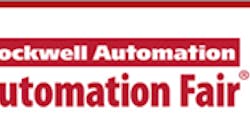A new generation of manufacturing execution systems (MES) being pioneered by Rockwell Automation reaches beyond production execution to provide true application functionality for specific industry needs. In addition to controlling the manufacturing process, this MES is driving integration up to ERP and down to the automation layer.
For pharmaceutical manufacturers, implementing a modern MES such as PharmaSuite from Rockwell Software promises improvements in optimization and visibility into all processes, with the bottom-line result being reduced time-to-market. But the reality of consistently implementing and managing MES across pharmaceutical production sites can seem overwhelming.
According to Claus Abildgren, consulting partner, NNE PharmaPlan, who presented at the Life Sciences Forum at Automation Fair this week in Chicago, three core challenges face corporate MES strategists. First, manufacturing operations leaders lack foresight of trends and technologies due to demanding daily operations. Second is the difficulty of balancing corporate vs. site goals and needs across an increasing range of product types, frequent recipe changes and evolving regulations. Third, local experience is often insufficient, and sites struggle to absorb new knowledge and expertise.
Tough questions
Presented with the challenge of modernizing MES in this complex environment, your typical head of manufacturing systems faces some big questions: how to balance corporate standards with individual site requirements; how to make sure projects are targeted by their value to the company; how to keep up with constant changes being pushed to the plants; and how to manage the expectations of all the stake holders.
“Just as you would not build a skyscraper from a pile of bricks and steel, so you should not build your manufacturing execution systems without a business blueprint.” Claus Abildgren of NNE PharmaPlan discussed how business objectives must drive MES design and implementation.
And the most important question of all: Where do I start?
According to Abildgren, the answer to that question is straightforward: Start with the business objectives. “When we’re talking about The Connected Enterprise—putting in these new tools, techniques and technologies—it’s critical to understand the business objectives of each and every site that’s in our supply chain and ask, ‘how do we add capabilities that support these business objectives?’”
From a logistical standpoint, Abildgren said the amount of information being generated, and having to be managed, in pharmaceutical manufacturing is “unbelievable.” And that information mostly lives in a seemingly never ending list of isolated systems: ERP, PLM, PDM, CAD, CTMS, APS, TMS, LIMS, QMS, EAM, Batch/DCS, SCADA, MES, historian. “Holy moly, look at all these systems we need to understand, coordinate and operate,” Abildgren said. “And every one comes with its own database and need for infrastructure, software and management.”
Begin with business objectives
Historically these systems have been scoped and installed in silos. The key to breaking these silos is to build an architecture strategy adopted from the standards used in enterprise technology deployments. Instead of scoping individual systems to answer the needs of specific applications, enterprise architecture begins with the business objectives, and these business objectives inform the decisions on what to implement.
“Just as you would not build a skyscraper from a pile of bricks and steel, so you should not build your manufacturing execution systems without a business blueprint,” Abildgren said. “Here, we move from business objective to business model to application.”
Creating the blueprint requires breaking down the entire manufacturing process into very specific functions and very specific systems with well-defined integration points. “Define which information is managed in which environment,” Abildgren said. For guidance, Abildgren points to best practices from GAMP5 and following good engineering practices.
“Modernizing MES isn’t cheap,” Abildgren said. “It has to be a thoughtful process and needs to have a common blueprint for which system is in which place for which reason. It’s a different perspective, and it’s a lot of work and it isn’t cheap. But a blueprint makes it a lot easier to justify the budget you’re asking for.”





